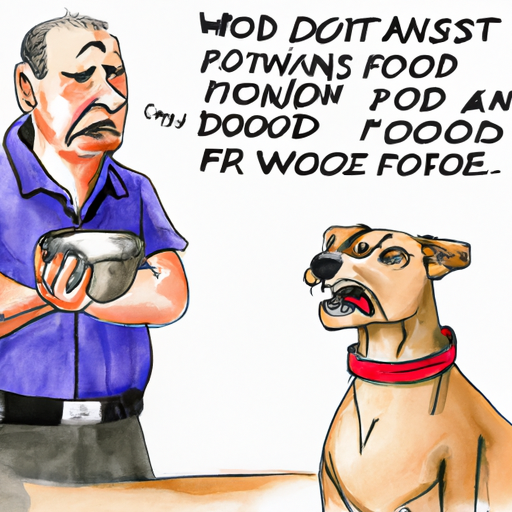Food aggression in dogs is a serious problem that can lead to dangerous behavior if not addressed properly. As a caregiver, you hold the responsibility to ensure your dog grows in a safe and caring environment. This guide will help you understand the steps to manage and mitigate food aggression in a more compassionate and understanding way.
What is Food Aggression?
Food aggression, also known as resource guarding, is a behavior in dogs where they guard their food as if it were a precious resource. Dogs who exhibit food aggression may growl, snarl, or even bite if they feel their food is threatened.
This behavior is a survival instinct in dogs, but it’s not acceptable in a domestic environment. Understanding the root cause of this behavior will help you address it effectively.
Recognizing the Signs of Food Aggression
Recognizing the signs of food aggression is essential in order to manage it. The signs can range from mild to severe. Here are common signs:
- Mild signs include tense body, gulping food, and eating faster when approached.
- Moderate signs involve growling, showing teeth, and staring.
- Severe signs are snapping or biting.
Steps to Address Food Aggression
Addressing food aggression does not involve punishment, but rather training and conditioning. Here are steps to follow:
- Consult a Professional: As the first step, consult with a professional dog trainer or behaviorist. They can provide tailored strategies based on your dog’s specific needs.
- Desensitization and Counter Conditioning: This involves making your dog used to presence of others when eating and associating it with positive experiences.
- Avoid Confrontation: Never try to take away your dog’s food forcibly, it will only exacerbate the problem.
- Teach Basic Commands: Having your dog know basic commands like ‘leave it’ or ‘drop it’ can help manage food aggression.
Dietary Considerations for Dogs with Food Aggression
Diet plays a crucial role in your dog’s behavior. Implementing a balanced and healthy diet can reduce anxiety and aggression in dogs. Here is a breakdown of a balanced diet:
| Nutrient | Importance |
|---|---|
| Proteins | Crucial for growth and tissue repair |
| Carbohydrates | Provide energy |
| Fats | Support brain and skin health |
| Vitamins and Minerals | For overall health |
Frequently Asked Questions (FAQs)
Q: Can food aggression be totally cured?
A: While it cannot be totally cured, it can be effectively managed with training and conditioning.
Q: Is food aggression a sign of other behavioral problems?
A: Not necessarily, but if your dog is showing signs of aggression in other areas, it’s best to consult with a professional.
Q: Will neutering or spaying my dog reduce food aggression?
A: Spaying or neutering can help reduce aggression in dogs, but it’s not a surefire solution for food aggression.
Remember, dogs aren’t being ‘bad’ when they guard their resources, they are simply reacting to their instincts. Your role is to guide them towards understanding that their food is not in danger. With patience and love, you can help your dog overcome this issue.



